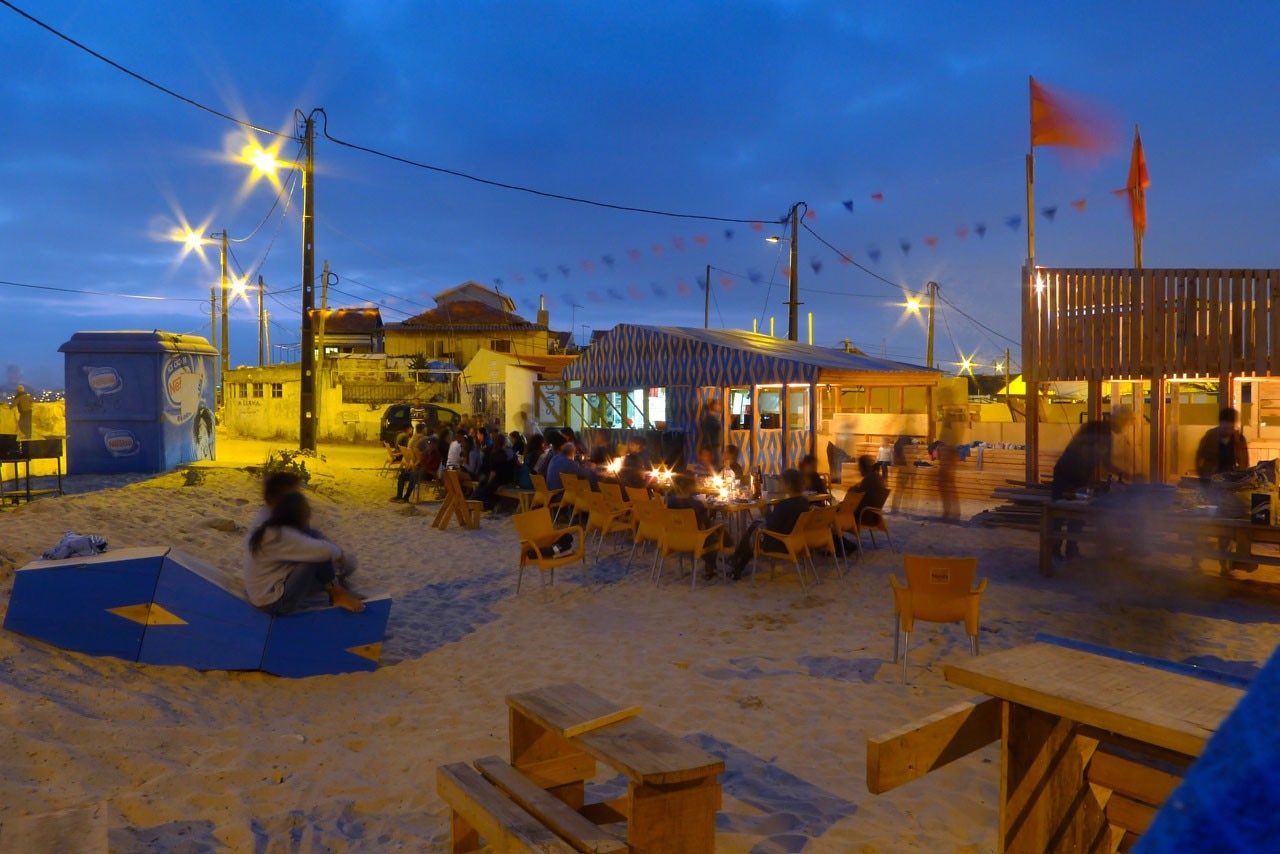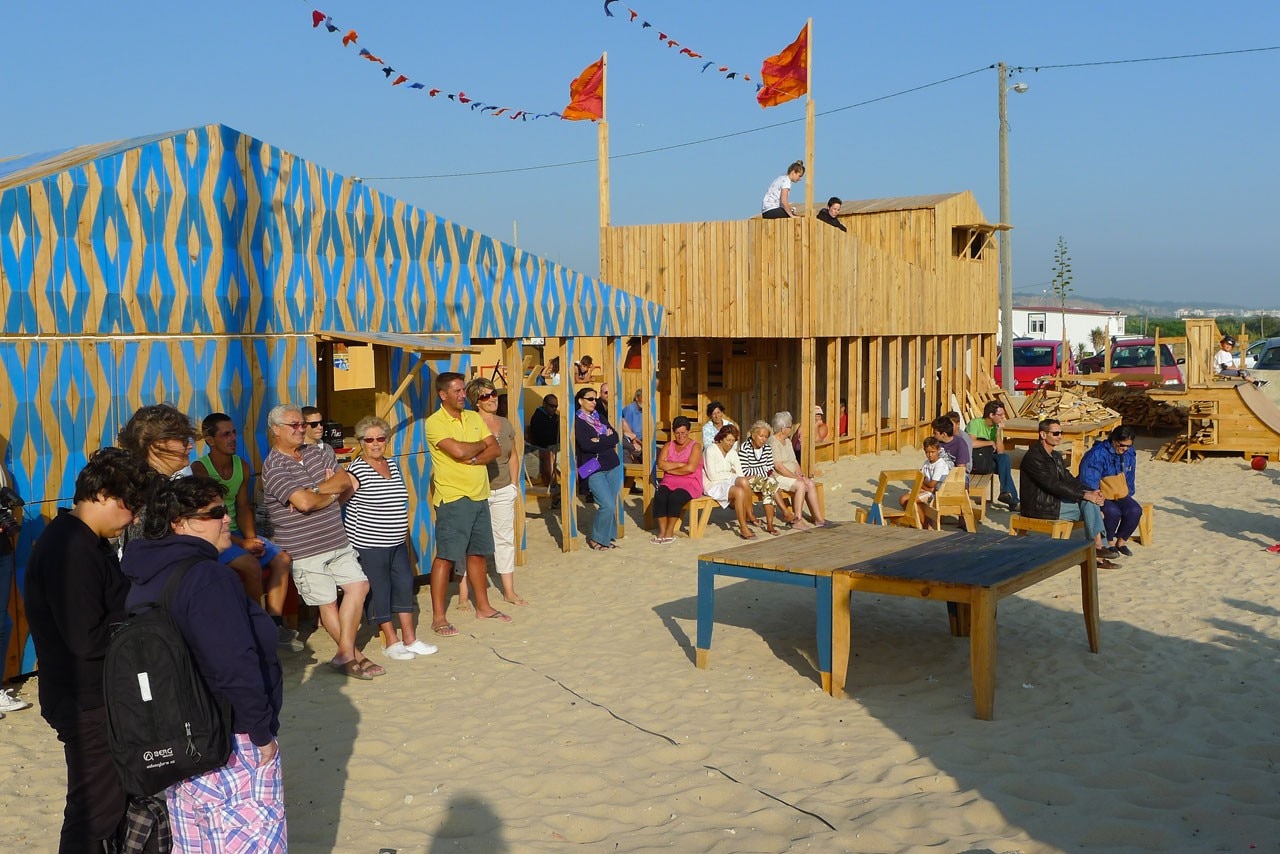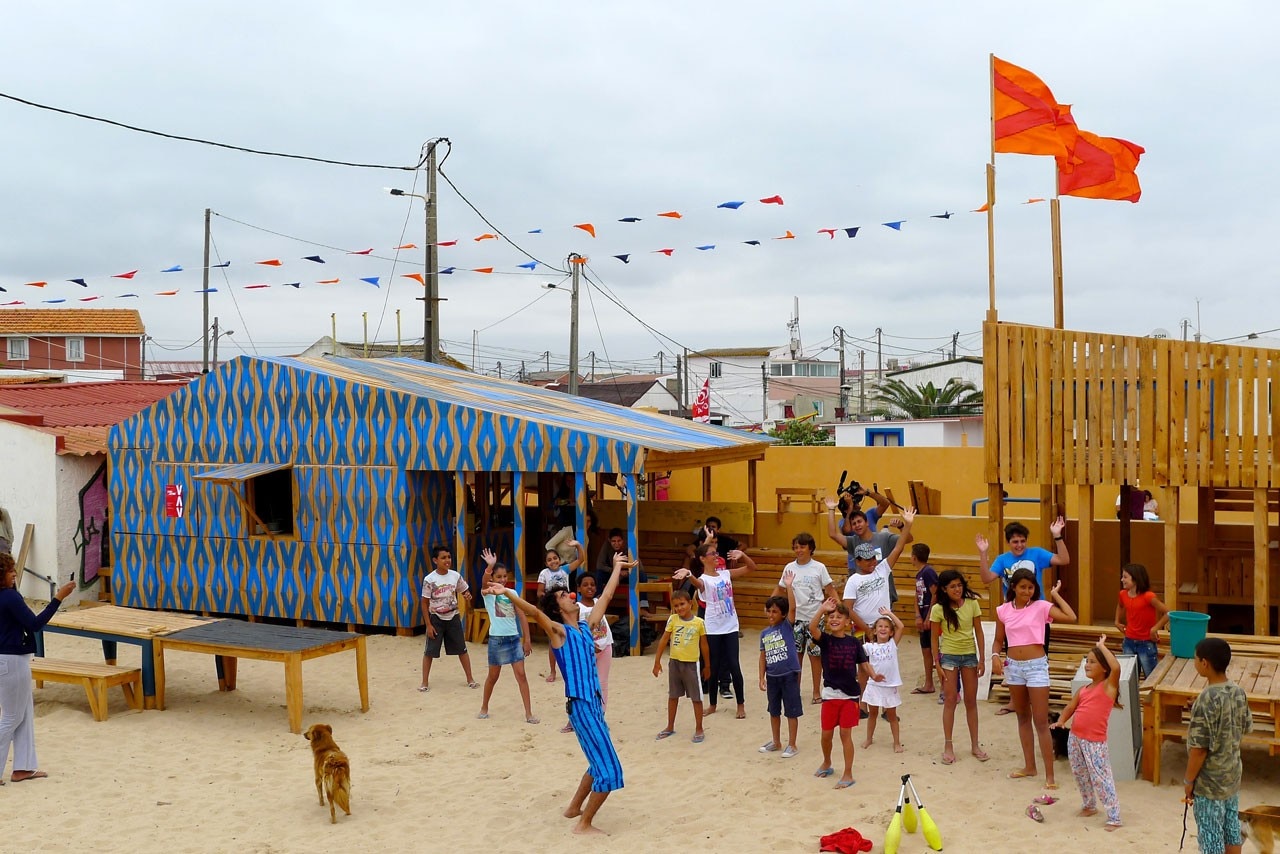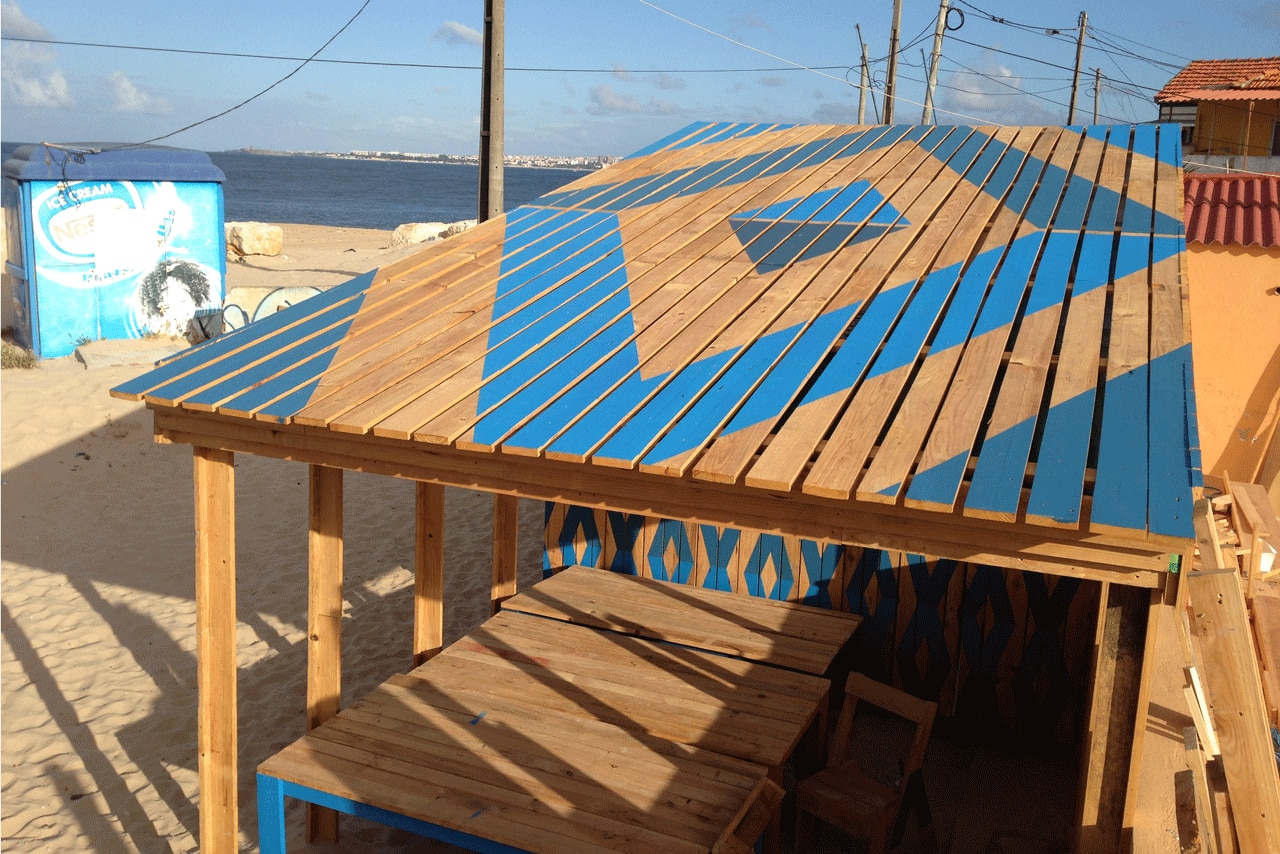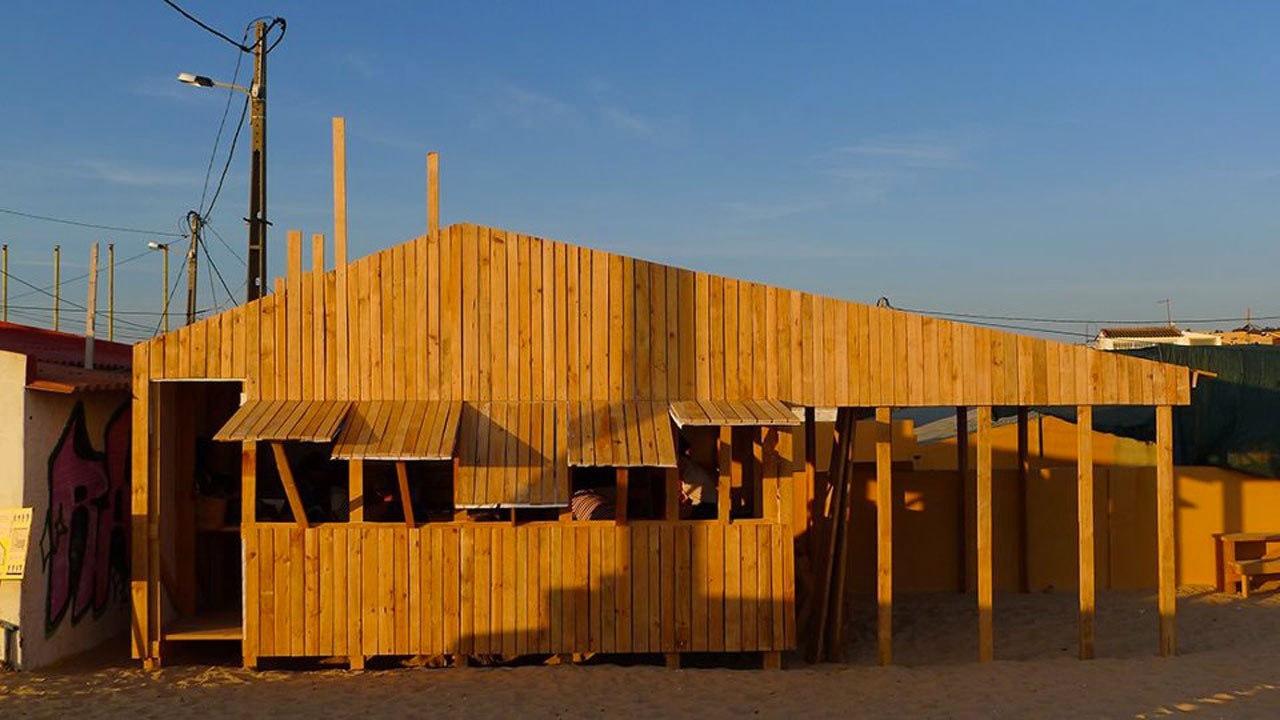
Perhaps this reaction of astonishment – which arrives from a phenomena that is as ancient as man’s relationship to the places he crosses and occupies – results from the saturation of the phenomena of standardization of many urban areas, which are transformed and adapted as to make them suitable to certain stereotyped criteria of aesthetics, functioning and use.
As it happens, aggressive processes of gentrification have way too many times characterised the dynamics that emerge from the transformation of poor areas through residential shifts and urban planning that affect - and alter - the composition of a neighbourhood.

The widespread of similar processes of radical alteration of pre-existent communities have determined such a suspicion towards the development of culture-related architectonic projects in poor areas.
Steam House, a temporary cultural centre entirely built from scratch in the heart of the Portuguese fishermen’s village of Cova do Vapor (literally Steam’s Cove), appears thus as a big surprise. Not only because it allowed for a radical change of the perception of a location that was widely ignored, but first and foremost because it attested how a place with such a low-profile connotation was able of welcoming and activating a very rich programme of activities and events.
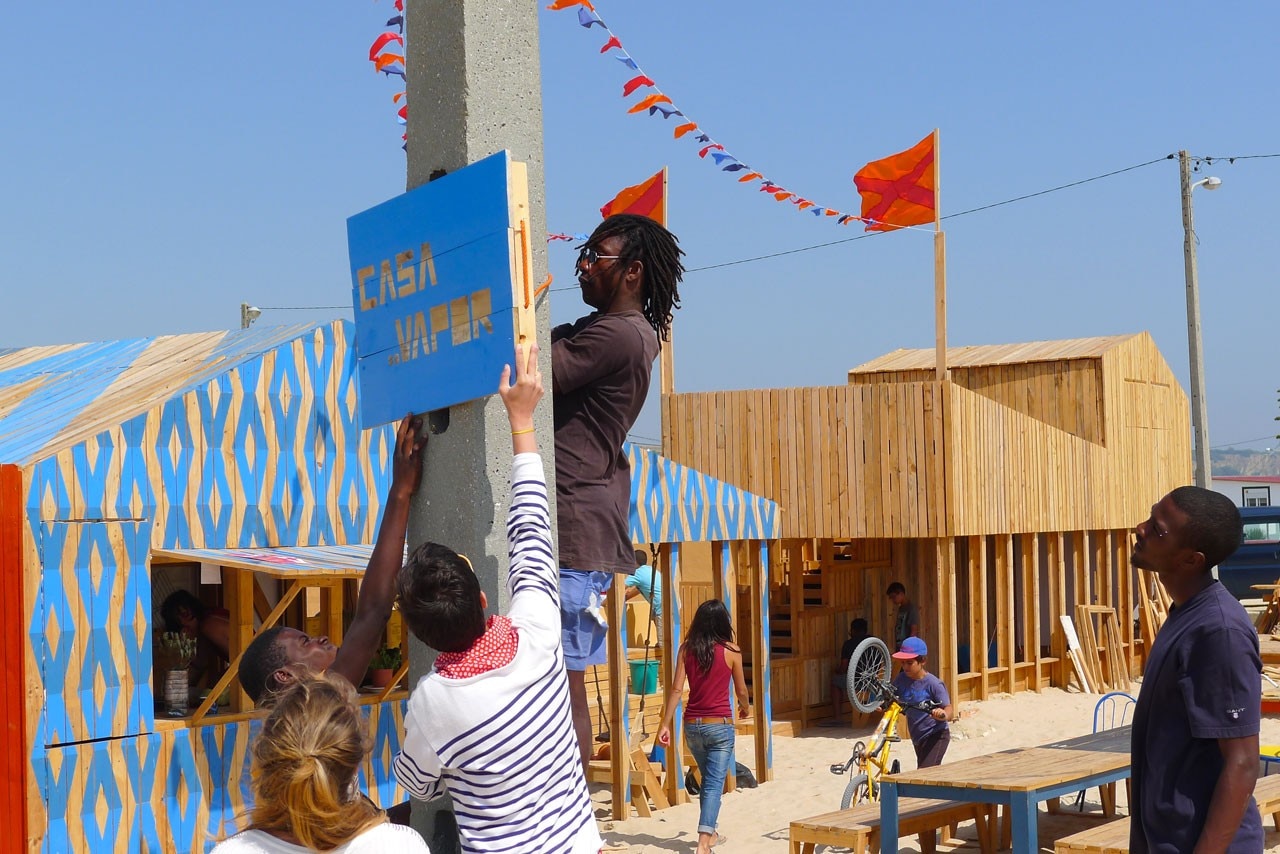
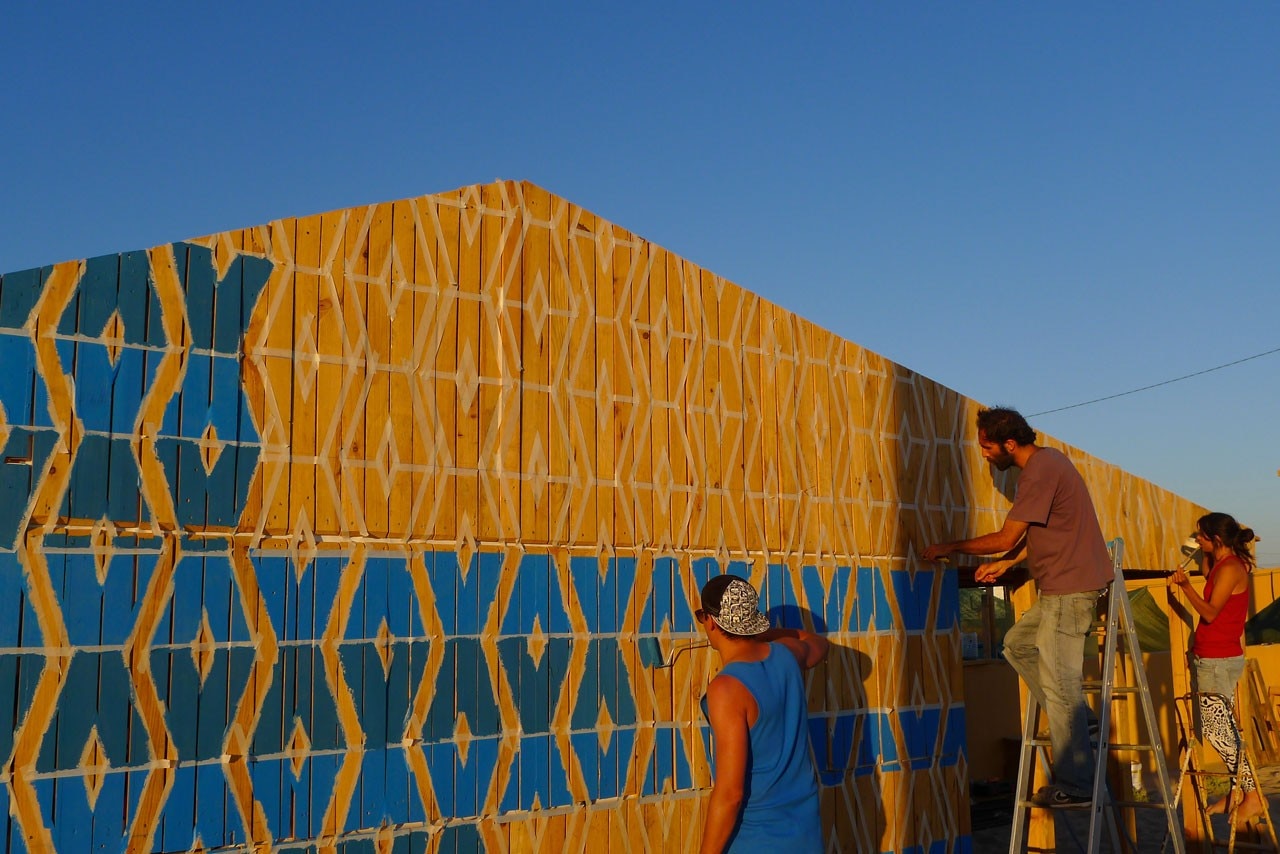
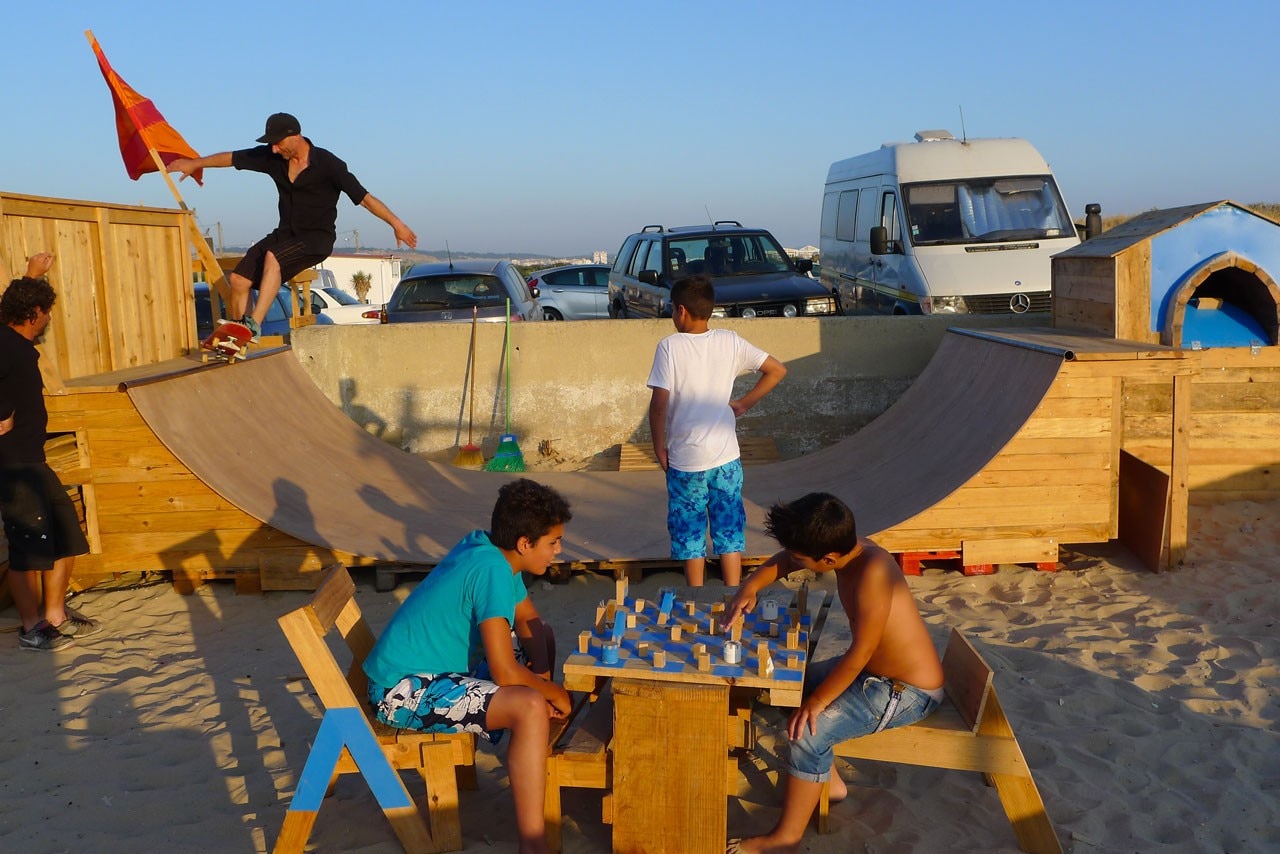
The construction and maintenance of the Steam House was done in close collaboration with the Cova do Vapor Residents Association, which is responsible for coordinating the all the activities and maintenance works of village.
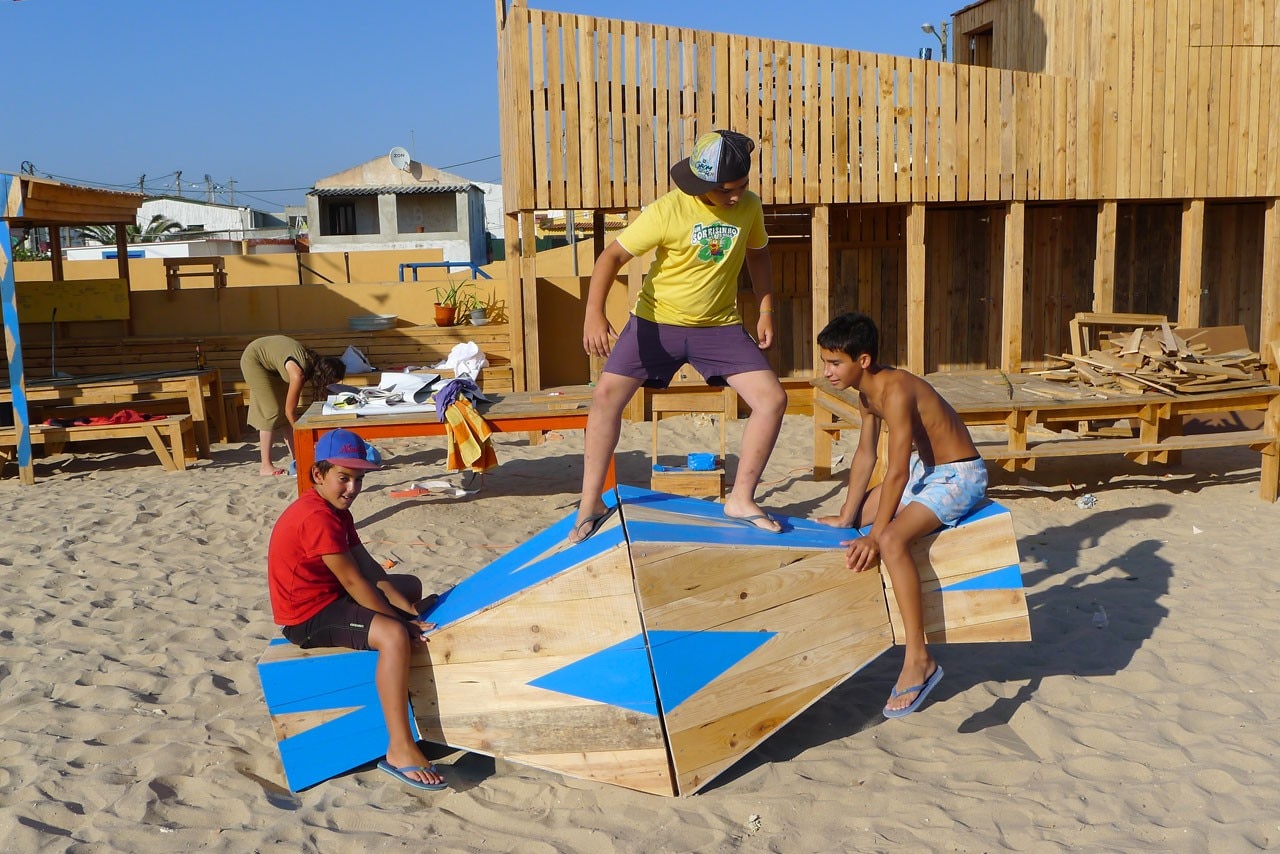
The architecture of the Steam House mirror the strong community-based context that hosts it by assuring the confluence of the internal and external spaces through the pillars of the houses, and by establishing a continuous communication between the several areas and functions of the cultural complex.
Hosting the above-mentioned artistic residency, surf school, but also a common kitchen serving typical food from Cova, a concert venue, an open-air cinema, and being a meeting place for the Community of Cova and for those who come and go to engage in the workshops or to to pay a visit to this place, Casa do Vapor is a model of how the intertwining of experiences, knowledge and modes of operating can exist and benefit everyone alike.



